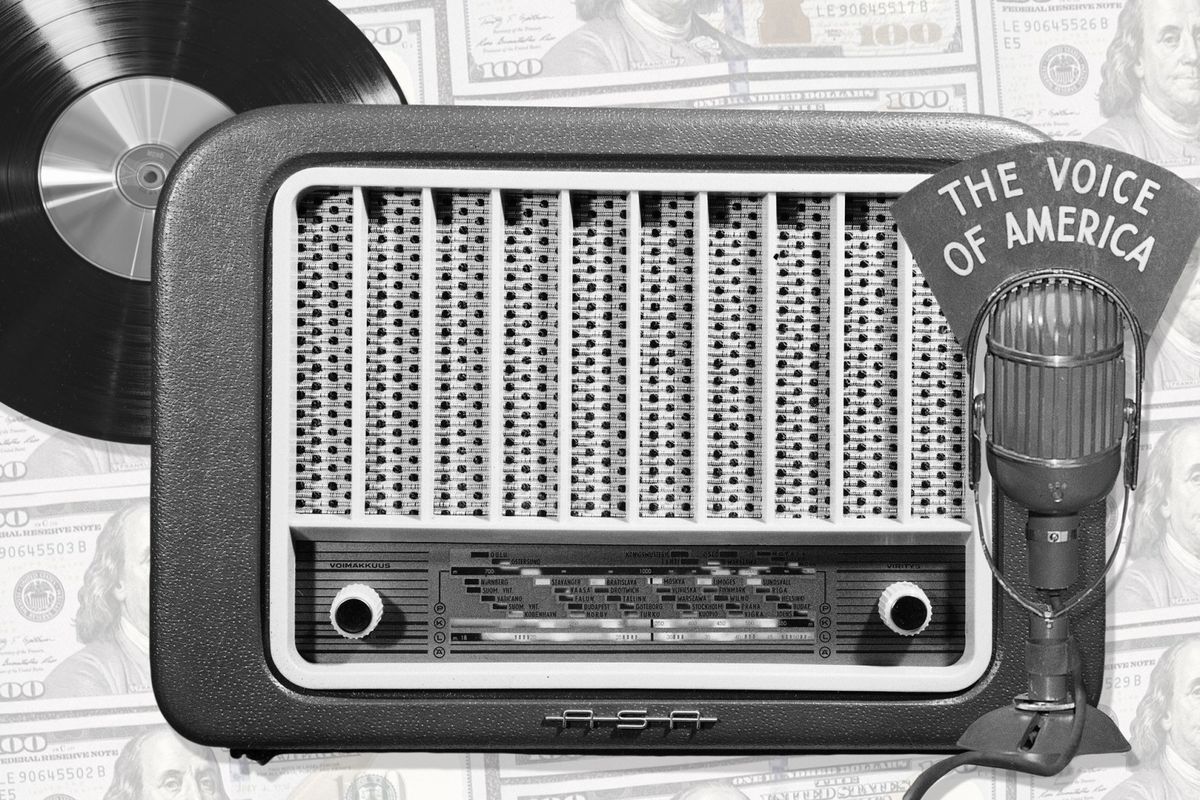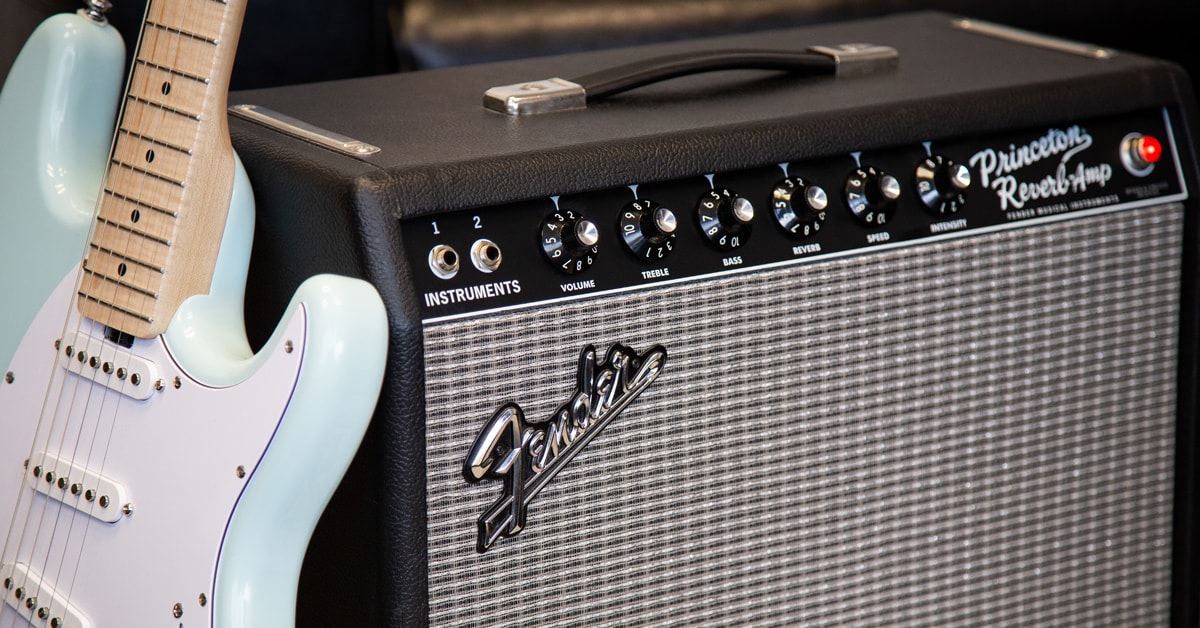Home>Devices & Equipment>Radio>How Does A Radio Work?


Radio
How Does A Radio Work?
Modified: January 22, 2024
Find out how radios work and discover the inner workings of this fascinating device. Explore the technology behind radios and learn about their functions and capabilities.
(Many of the links in this article redirect to a specific reviewed product. Your purchase of these products through affiliate links helps to generate commission for AudioLover.com, at no extra cost. Learn more)
Table of Contents
Introduction
Welcome to the fascinating world of radio! Radio has been a significant form of communication and entertainment for over a century, captivating listeners with its ability to transmit news, music, and voices across vast distances. But have you ever wondered how radio actually works? How does it manage to deliver sound into our homes, cars, and portable devices, seemingly out of thin air?
At its core, radio is all about harnessing the power of electromagnetic waves. These waves, known as radio waves, are a type of electromagnetic radiation that can travel through the air or space. They have unique properties that enable them to carry information over long distances, allowing us to tune in and enjoy a variety of radio programming.
Radio waves are generated by an electronic device called a transmitter. This transmitter takes an audio signal, such as music or speech, and converts it into an electrical waveform. The waveform is then amplified and used to modulate a carrier wave. The carrier wave acts as a carrier for the audio signal, enabling it to be transmitted through the air.
On the receiving end, we have another essential component called a radio receiver. This device is responsible for capturing the radio waves and extracting the audio signal. The receiver uses an antenna to capture the radio waves, converting them back into electrical signals. These signals are then demodulated to retrieve the original audio signal, which is then amplified and sent to a speaker or headphones for us to hear.
Understanding the basics of radio transmission and reception is crucial to comprehend how the different components work together. From antennas to tuning circuits, each element plays a vital role in ensuring a smooth and clear radio signal. In this article, we will explore these components in more detail, as well as dive into the differences between AM and FM radio, and the advancements in digital radio technology.
So, whether you’re an avid radio listener, someone interested in the technical aspects of radio, or just curious about how it all works, join us on this journey of discovery as we unravel the mysteries of radio and its inner workings. Let’s tune in and delve into the world of radio technology!
The Basics of Radio Waves
To understand how radio works, it’s essential to grasp the fundamentals of radio waves. Radio waves are a type of electromagnetic radiation, which consists of both electric and magnetic fields oscillating at right angles to each other. These waves have specific characteristics that allow them to travel through the air or even through space.
Radio waves are produced by an alternating current (AC) in an antenna. When the AC flows through the antenna, it creates oscillating electric and magnetic fields that radiate outwards as radio waves. These waves propagate in all directions from the antenna, making them capable of traveling long distances.
Radio waves have different properties, such as wavelength and frequency, that determine how they behave and how they can be used for communication. The wavelength is the distance between two adjacent peaks or troughs of the wave, usually measured in meters. The frequency, on the other hand, represents the number of oscillations the wave completes in one second, measured in Hertz (Hz).
One of the key properties of radio waves is their ability to be modulated with information. This means that the characteristics of the wave, such as its amplitude, frequency, or phase, can be modified to carry a specific signal. For example, in amplitude modulation (AM) radio, the amplitude of the carrier wave is altered to represent the audio signal, while in frequency modulation (FM) radio, the frequency of the carrier wave is varied.
Radio waves are also subject to various factors that can affect their propagation and reception. These factors include interference from other signals, obstacles like buildings or mountains, and atmospheric conditions. To minimize interference and ensure effective reception, radio broadcasters and engineers use various techniques like frequency modulation, antenna design, and signal amplification.
Understanding the basics of radio waves is crucial to comprehend the principles behind radio transmission and reception. By harnessing the power of these waves, we can transmit and receive information over long distances, making radio a vital medium for communication and entertainment.
Transmission and Reception
Transmission and reception are the two fundamental processes that make radio communication possible. The transmission stage involves the conversion of audio signals into radio waves, while the reception stage retrieves the audio signals from the radio waves and converts them back into a usable form.
During the transmission process, the audio signal, whether it’s music, speech, or any other sound, is first converted into an electrical waveform. This conversion is typically done using a transducer, such as a microphone or a musical instrument. The electrical waveform represents the variations in air pressure caused by the audio signal.
Next, the electrical waveform is amplified to increase its strength, ensuring that it can modulate the carrier wave effectively. Modulation is the process of impressing the audio signal onto the carrier wave so that the signal can be transmitted through the air as radio waves.
There are different modulation techniques used in radio transmission, with two of the most common ones being amplitude modulation (AM) and frequency modulation (FM). In AM radio, the amplitude of the carrier wave is varied in accordance with the audio signal. In FM radio, on the other hand, the frequency of the carrier wave changes to represent the audio signal.
Once the radio waves are transmitted, they travel through the air or space until they reach a receiver. The receiver consists of an antenna that captures the radio waves and converts them back into electrical signals. The antenna acts as a transducer, transforming the electromagnetic energy of the radio waves into electrical energy.
After capturing the radio waves, the electrical signals are then fed into a demodulator, which extracts the original audio signal from the carrier wave. In the case of AM radio, the demodulator detects the variations in the amplitude of the electrical signals to retrieve the audio signal. In FM radio, the demodulator detects the changes in the frequency of the electrical signals.
Once the audio signal is demodulated, it is amplified to a suitable level and then sent to a speaker or headphones, where it is converted back into sound waves for us to hear.
Transmission and reception are vital processes that work hand in hand to facilitate the delivery of audio signals through radio waves. Whether it’s broadcasting a radio show or transmitting emergency communications, these processes ensure that the information reaches the intended recipients, enabling effective and widespread communication.
The Role of Antennas
Antennas play a crucial role in the transmission and reception of radio waves. They are responsible for capturing and radiating electromagnetic energy, allowing for efficient communication over long distances.
Antennas are designed to interact with the electric and magnetic fields of radio waves. They consist of conductive materials, such as metal, configured in specific shapes to optimize their performance. The size and shape of an antenna are determined by the frequency of the radio waves it is intended to transmit or receive.
During transmission, the antenna converts the electrical signals carrying the audio information into electromagnetic waves. It radiates these waves into the surrounding space, propagating them outwards to reach the intended receivers. The design and orientation of the transmitting antenna are crucial in determining the direction and coverage area of the transmitted signal.
When it comes to reception, antennas play the opposite role. They capture the electromagnetic waves present in the environment and convert them back into electrical signals. These signals contain the audio information embedded in the radio waves. The captured waves induce an alternating current (AC) in the antenna, creating electrical signals proportional to the received radio waves’ amplitude and frequency.
For optimal reception, the receiving antenna must be properly aligned and tuned to the frequency of the desired radio signal. Different types of antennas are used depending on the specific radio application. For example, a whip antenna, commonly found on portable radios or car radios, is a simple, straight metal rod that captures signals from all directions. On the other hand, a directional antenna, such as a Yagi antenna, is designed to focus on signals from a specific direction while minimizing interference from other directions.
Antennas also play a critical role in overcoming obstacles and maximizing signal strength. In situations where there are physical obstructions like buildings or mountains, antennas placed at higher locations or utilizing more powerful transmitters can help transmit or receive signals over these obstacles. Additionally, signal amplifiers can be used to boost weak signals or overcome signal degradation caused by long distances.
The design and efficiency of an antenna are essential factors in the overall performance of a radio system. By properly selecting and positioning the antenna, broadcasters and operators can achieve better signal reception, wider coverage areas, and improved communication quality.
Overall, antennas act as the interface between the physical world and the electromagnetic realm, facilitating the transmission and reception of radio waves, and playing a crucial role in enabling wireless communication.
Tuning and Selectivity
Tuning and selectivity are key aspects of radio technology that help to ensure we receive the desired radio signal while minimizing interference from other unwanted signals. These processes allow us to fine-tune our radios to specific frequencies and enhance the clarity and quality of the audio we hear.
Tuning refers to the ability to adjust the radio receiver to a specific frequency or channel. It involves tuning the receiver’s circuitry to resonate at the desired frequency, allowing it to capture and process the corresponding radio waves. This tuning can be achieved using various methods, depending on the type of radio receiver.
In analog radios, tuning is often accomplished through a variable capacitor or inductor. By adjusting the capacitance or inductance in the circuit, the receiver can be tuned to resonate at a specific frequency, effectively filtering out other frequencies. This allows the receiver to isolate and amplify the desired radio signal, enhancing its strength and clarity.
Modern digital radios, on the other hand, use digital tuners that are capable of quickly scanning and locking onto specific frequencies. These digital tuners utilize algorithms and signal processing techniques to automatically tune to the strongest or clearest frequency available in the area. This allows for seamless and efficient tuning without the need for manual adjustments.
Selectivity is closely related to tuning and refers to a radio receiver’s ability to separate the desired radio signal from other signals on adjacent frequencies. It is a measure of how well the receiver can filter out unwanted signals and focus on the specific frequency of interest.
Selectivity is achieved through the use of filters in the receiver’s circuitry. These filters have specific bandwidths that allow only signals within a certain frequency range to pass through while attenuating signals outside of that range. A narrower bandwidth means higher selectivity but can also result in a reduction in audio quality. Balancing selectivity and audio fidelity is crucial for achieving optimal performance in a radio receiver.
Both tuning and selectivity are vital for a satisfying radio listening experience. They allow us to tune in to our favorite stations, mitigate interference from other signals, and enjoy clear and high-quality audio. The ability to fine-tune our radios and optimize selectivity ensures that we can find and lock onto the desired signals amidst the various frequencies in the airwaves.
As radio technology continues to evolve, advancements in tuning and selectivity will play a significant role in improving signal reception, minimizing interference, and enhancing the overall radio listening experience.
Demodulation and Audio Output
Demodulation and audio output are the final steps in the radio receiving process, where the modulated radio waves are converted back into the original audio signal for us to hear. These processes involve extracting the audio information from the received signals and amplifying it to a level suitable for driving a speaker or headphones.
Once a radio wave is captured by the antenna and converted into electrical signals, it still carries the modulated carrier wave that was used to transmit the audio signal. The demodulation process is necessary to extract this audio signal from the carrier wave.
In amplitude modulation (AM) radio, the demodulation process involves detecting the variations in the amplitude of the received electrical signals. This is typically done using a diode or a similar device. The diode acts as a rectifier, allowing only the positive or negative half of the electrical waveform to pass through. This results in a varying direct current (DC) signal that represents the audio signal. The varying DC signal is then further filtered and amplified to recreate the original audio signal.
In frequency modulation (FM) radio, the demodulation process is more complex. The received electrical signals are fed into a circuit called a frequency discriminator or a phase-locked loop (PLL). These circuits detect the changes in the frequency or phase of the signals and convert them into a varying DC voltage. This varying DC voltage represents the audio signal and is then filtered and amplified to reproduce the original audio.
Once the audio signal is demodulated, it needs to be amplified to a level suitable for driving a speaker or headphones. This is achieved using audio amplifiers. The amplification process ensures that the weak audio signal, which was embedded in the radio waves and then extracted, is strengthened to a level that can produce audible sound.
After amplification, the audio signal is sent to a speaker or headphones, where it is converted back into sound waves that we can hear. The speakers or headphones contain transducers that transform the electrical signal into mechanical vibrations, which in turn generate sound waves in the air. These sound waves are then detected by our ears, allowing us to perceive the audio program being transmitted through the radio waves.
The demodulation and audio output stages are vital in completing the radio receiving process. They transform the modulated radio waves containing audio information back into the original audio signal, allowing us to enjoy a wide range of programming, including music, news, and entertainment, through our radios.
AM vs FM Radio
AM (Amplitude Modulation) and FM (Frequency Modulation) are two of the most common types of radio broadcasting technologies. They differ in how they modulate the carrier wave to transmit audio information, resulting in distinct characteristics and benefits for each.
AM radio, which has been in use since the early days of radio broadcasting, modulates the amplitude (strength) of the carrier wave to carry the audio signal. The amplitude variations represent the changes in the audio waveform, allowing it to be replicated upon demodulation. AM radio signals are susceptible to interference and noise, which can result in static or disturbances on the received signal. However, AM signals can propagate over long distances and penetrate obstacles more effectively than FM signals. This makes AM radio suitable for long-range broadcasts, especially during nighttime when atmospheric conditions enhance its range.
FM radio, on the other hand, uses frequency modulation to transmit audio signals. In FM radio, the frequency of the carrier wave is varied in proportion to the audio signal. The main advantage of FM over AM is its resistance to noise and interference. FM signals are less susceptible to atmospheric conditions or electromagnetic interference, resulting in clearer and higher fidelity sound. However, FM signals have a shorter range compared to AM and are more affected by physical obstacles.
The audio quality of FM radio is generally considered superior to AM, with FM providing a wider frequency response and a clearer sound reproduction. This is why FM radio is commonly used for music stations, offering a more enjoyable listening experience for music enthusiasts.
Another notable difference between AM and FM radio is their bandwidth allocation. AM radio uses a narrower bandwidth, typically ranging from 540 kHz to 1700 kHz, allowing for more stations to be broadcast within the available spectrum. FM radio, on the other hand, has a wider bandwidth, typically ranging from 88 MHz to 108 MHz. This wider bandwidth allows for higher fidelity audio and greater channel separation.
Both AM and FM radio have their own advantages and applications. AM radio is well-suited for long-range communication and is often used for news, talk shows, and sports broadcasts. FM radio, with its higher audio quality and resistance to interference, is preferred for music stations and local programming.
In recent years, the advent of digital radio technologies, such as HD Radio and DAB (Digital Audio Broadcasting), has offered even greater audio fidelity and more channel options. These digital radio technologies provide improved sound quality, enhanced reception, and additional features like song information and interactive content.
Overall, the choice between AM and FM radio depends on the specific requirements and preferences of both broadcasters and listeners. Whether you prefer the long-range capability of AM or the superior audio quality of FM, radio continues to be a versatile and widely accessible medium for news, entertainment, and music.
Digital Radio Technology
Digital radio technology represents a significant advancement in the field of radio broadcasting, offering improved audio quality, enhanced features, and greater flexibility compared to traditional analog radio. Digital radio uses various encoding techniques to convert audio signals into binary code, allowing for more efficient transmission and reception.
One of the most popular digital radio technologies is HD Radio, which provides higher fidelity sound and additional features compared to traditional FM and AM radio. HD Radio utilizes digital encoding to transmit audio signals alongside existing analog signals. This technology allows for the simultaneous transmission of multiple channels within the same bandwidth, providing listeners with more choices and diverse programming options.
HD Radio also eliminates many of the limitations associated with analog radio, such as interference and static. The digital signal is less prone to atmospheric conditions and electromagnetic interference, resulting in clearer sound reproduction and a more reliable listening experience. Additionally, HD Radio enables the transmission of supplementary information, such as song titles, artist names, and traffic updates, enhancing the overall radio experience for listeners.
Another notable digital radio technology is DAB (Digital Audio Broadcasting). DAB is a standard for digital radio broadcasting that has been adopted in various countries around the world. DAB utilizes digital multiplexing to carry multiple radio stations within a single broadcast channel. This allows for efficient use of available bandwidth and provides listeners with a wide range of radio stations to choose from.
With digital radio, the audio signal is converted into digital data, which can be compressed using various codecs (coder-decoders). Codecs help reduce the size of the digital audio file without significantly impacting the sound quality. This compression enables efficient use of bandwidth, allowing more stations and ancillary data to be transmitted simultaneously.
In addition to improved audio quality and expanded programming options, digital radio technology offers other benefits like improved reception, automatic tuning, and interactive features. Digital radios can automatically scan for available stations and display their names, making it easier for users to navigate through the available channels. Furthermore, digital radio receivers can support additional features like program guides, traffic updates, and even multimedia content.
As digital radio technology continues to evolve, new advancements like internet radio streaming and online content integration are becoming increasingly prevalent. These developments provide even more opportunities for broadcasters to deliver diverse and engaging content to their audiences.
While digital radio technology offers numerous advantages, it is important to note that the transition from traditional analog radio to digital radio will take time and may require updates to existing infrastructure and radio receivers. Nonetheless, the benefits of digital radio make it an exciting and promising direction for the future of radio broadcasting.
Conclusion
Radio, with its captivating ability to transmit voices, music, news, and entertainment across vast distances, has been a cornerstone of communication for over a century. Understanding the inner workings of radio technology allows us to appreciate the magic happening behind the scenes as we tune in to our favorite stations.
We have explored the basics of radio waves, the transmission and reception processes, the role of antennas, and the crucial steps involved in demodulation and audio output. Alongside these fundamentals, we have also delved into the differences between AM and FM radio, highlighting their respective strengths and applications. Moreover, digital radio technology has emerged as a game-changer, offering improved audio quality, enhanced features, and greater flexibility, paving the way for exciting developments in the world of radio broadcasting.
As we conclude this journey into the world of radio, it is important to acknowledge the role of technology in shaping the radio landscape. Digital advancements have ushered in a new era, broadening the horizons of what radio can offer with features like HD Radio, DAB, and internet streaming. These technologies have transformed the way we listen to radio, enabling clearer reception, increased channel choices, and the integration of interactive elements.
Despite the rise of digital, traditional radio continues to hold a special place in our lives. The familiarity of tuning dials, the warmth of analog signals, and the charisma of local broadcasters continue to captivate listeners around the world. Whether it’s discovering new music, staying informed with news updates, or simply enjoying the companionship of a favorite radio host, the allure of radio remains unwavering.
As we move forward, radio technology will undoubtedly continue to evolve, adapting to changing times and listening preferences. Whether through analog or digital means, radio will continue connecting people, bridging distances, and sharing stories for generations to come.
So, the next time you tune in to your favorite radio station, take a moment to appreciate the wonders of radio technology. Reflect on the journey that sound waves embark on as they are transformed into electromagnetic waves, transmitted through the air, and finally converted back into audible sound. Embrace the magic of radio and revel in the power of this extraordinary medium.











